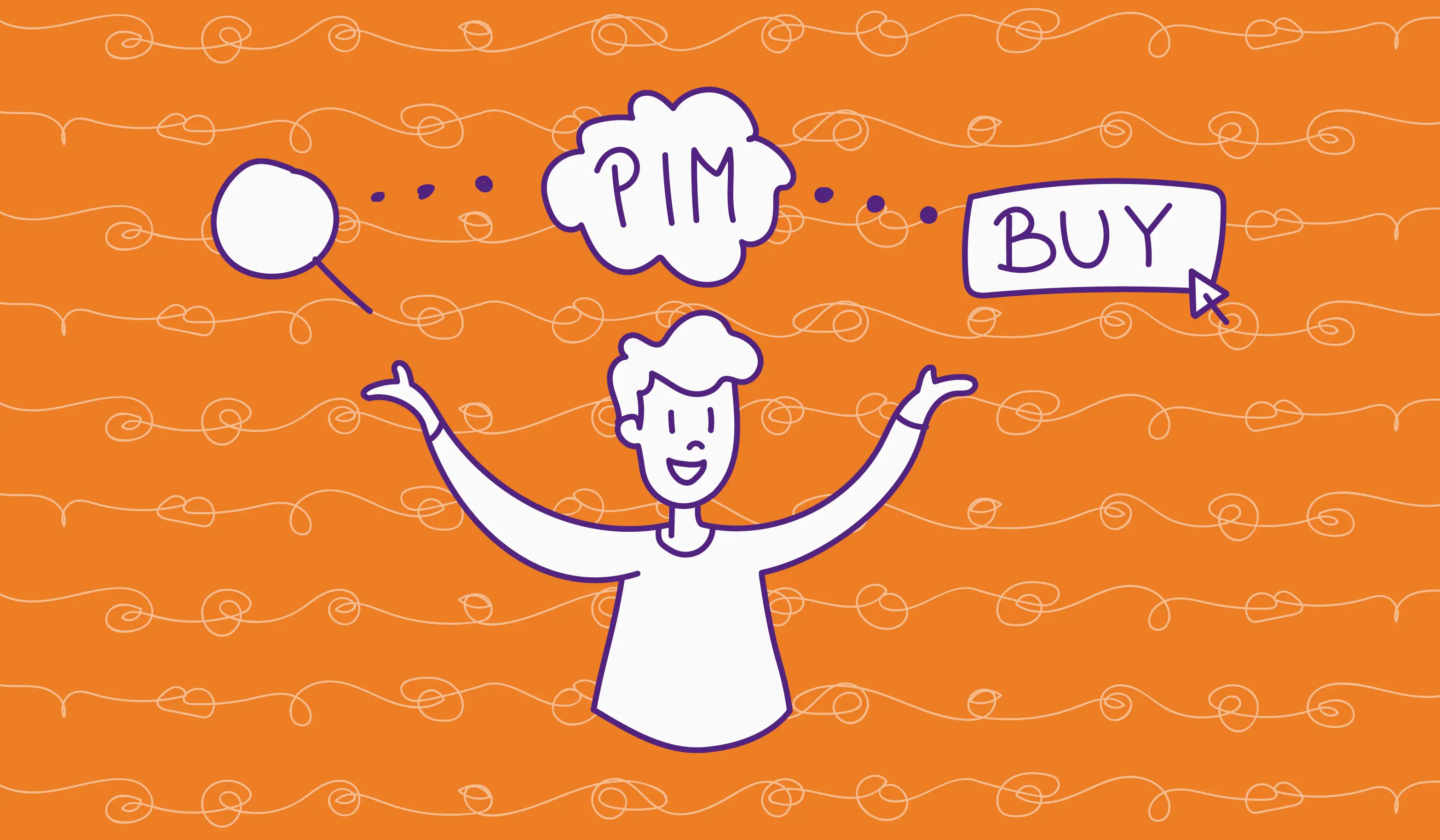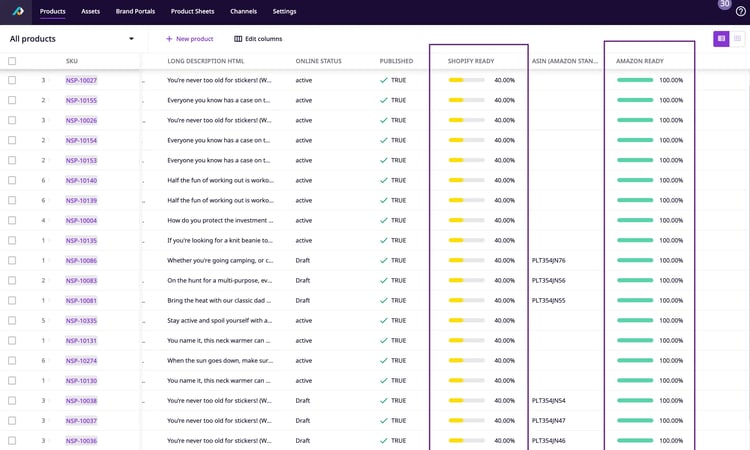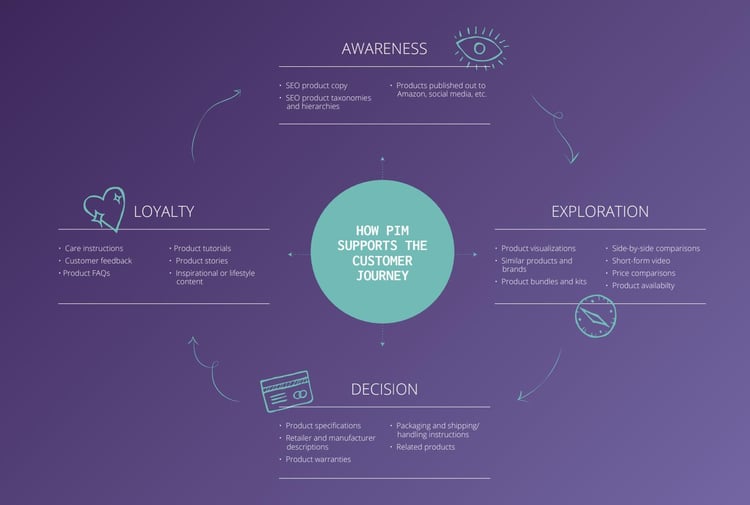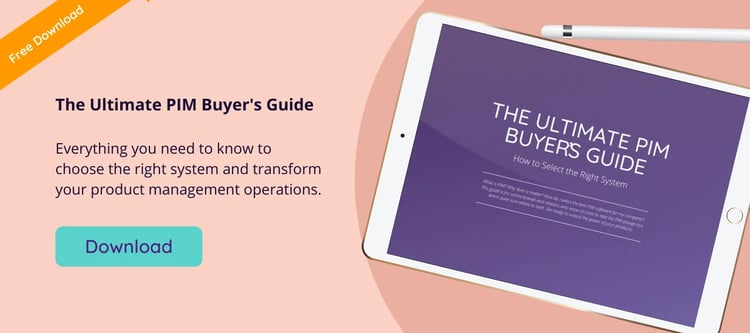4 Ways a PIM Tool Can Support Your Customer Journey and Experience

Keep the good stuff coming
Subscribe to our blog newsletter and get monthly content that helps you manage product data smarter.
No spam. Just real value.
Customers of today do not just buy products; they buy the whole experience.
They expect the best product experience wherever they shop—but still, so many customers are left disappointed and end up leaving altogether. So, where exactly is the disconnect that causes customers to start their journey but not reach the conversion stage? The answer is three words: product information management.
PIM is key to unlocking customer satisfaction. When rich data is lacking, misleading, inaccurate, inconsistent, or outdated, both existing and potential customers become frustrated. A dissatisfied customer will not buy from you and will likely not return. But product information that’s easily available, accurate, up-to-date, and consistent across all of your sales channels has the opposite effect.
According to this article, a positive customer experience is said to increase customer spending by up to 140%. Unfortunately, so many modern ecommerce businesses lose out on this opportunity as their data teams are unproductive and inefficient, as far as managing accurate product information is concerned.
It's impossible to fully support the customer journey when you have to spend your days manually updating hundreds (or thousands) of product descriptions, prices, and images across dozens of platforms — all while hoping that the information in the “2021_products_Ron’s edit_FINAL V3_REALLY THIS IS THE FINAL_Leslie’s changes X2” spreadsheet is is actually up to date. This is where using Plytix for product content management can rescue you and save you from your miseries.
Let’s explore the four ways PIM software can support the customer journey:
1. Awareness
It is in this stage that customers discover your brand or products. The big question here is: how do they discover you? Is it via word of mouth (a recommendation by family or friends), social media, a search engine, or listings on marketplaces?
In all of the above avenues of discovery, product information remains the number one reason for the discovery. With search engines and marketplaces, in particular, detailed content speaks to your search engine optimization (SEO) and product listing optimization (PLO) capabilities, respectively. When you have a PIM tool, you’re able to optimize your product content by adding high-volume keywords and phrases into your product titles, descriptions, meta descriptions, tags, “alt-text” for images, and URLs. You can also ensure clear, user-friendly taxonomies by tweaking your product information through computed attributes. A structured approach to filtering will help you rank higher everywhere you sell from.
2. Exploration
Okay, so they’ve discovered your products, and now their interest has peaked.
Let’s talk about what keeps them browsing through your product pages or listings.
Without guessing, the answer will undoubtedly be product information that is engaging, relevant, and answers their most burning questions.
Questions like:
- What are the colors and sizes that this product comes in?
- What does it look like in a real-life situation?
- How can I use this product?
- What features does it come with?
…and so many other questions customers need answering.
We’ll be honest with you; enriching your product data for different devices, channels, and touchpoints, without a product catalog management system is near impossible. If it is, you have a ton of time on your hands. With PIM, you can easily add information such as product color and size variations, measurements, ingredients, etc. In addition to that, you can add sales information such as prices.
Suppose you choose a PIM that has digital asset management (DAM) capabilities like Plytix. In that case, you can even enhance your customers’ imaginations by adding high-quality product images and videos that show the product in action.
3. Decision
This is the stage where the magic happens. Customers know what to expect with your product, and they like the product enough to consider buying it. But what makes them convert? That would be information around the specifications of the product, retailer and manufacturer information, product availability, warranty, shipping, and customer reviews. Want to know the good news? This is all information that you can store, organize and manage in a PIM tool like Plytix.
With Plytix, you can create unique and detailed product descriptions that include brief explanations of the product features to communicate their value. You can add “how-to-use” information where necessary to further communicate product value. Another super interesting fact about our PIM is that it has a completion tracking feature that lets you know when you have or haven’t completed adding all necessary attributes to each product. This ensures that you’re not missing any information that is crucial in nudging a customer toward a buying decision.

4. Loyalty
Having a customer complete a sale and come back for more, time and time again, is a dream come true for any business. As you know, product experience management is a never-ending journey, and retaining customers requires some nurturing work. Providing customers with information on how to care for their newly purchased product is one of the many ways you can nurture them and build customer loyalty. You need to always be top of mind when they think about shopping again. Keep them interested by sending them information about products related to their previous purchase, a new variation of the same product, or unrelated best-selling products to give them the fear of missing out (FOMO).
As you may already have guessed, a PIM system can help with that.
For instance, you can create a simple ecommerce product catalog with related items and communicate how they can be a worthy addition to their collections. This is information that already exists in PIM, so all you’d have to do is pull the information, plug it in your chosen template and prepare it to send to customers.
You can also create product tutorials or recipes in video format, and store this information in PIM alongside the relevant product. This extra touch keeps customers informed about the products they’ve bought, or are interested in.

A five-star customer journey fueled by Plytix PIM
Plytix is a multichannel management tool that drives efficiency from one home.
Our PIM is known as the best PIM for Shopify, for example, as well as other ecommerce platforms and marketplaces. It lets you integrate optimized data with multiple channels, so you can easily distribute content wherever it needs to go.
It’s a collaborative platform that gives your sales teams, ecommerce manager, and marketing department accurate product data and materials that they can access on the go. But most importantly, your customers will be empowered to discover, consider, and buy with confidence, knowing that your brand provides the highest quality information (and products!) that they can trust and rely on.
As you can see, there are tons of benefits from using PIM software. You can find the rest thoroughly detailed in "The Ultimate PIM Buyer’s Guide" white paper.
Download it here:
If you’re ready to see Plytix for yourself, we're here for you.

What if your product data actually worked for you?
We’ll show you how Plytix helps you stop fixing data—and start using it.
Related posts
Keep the good stuff coming
Subscribe to our blog newsletter and get monthly content that helps you manage product data smarter.
No spam. Just real value.






Think others should see this?
Go ahead and share it.